
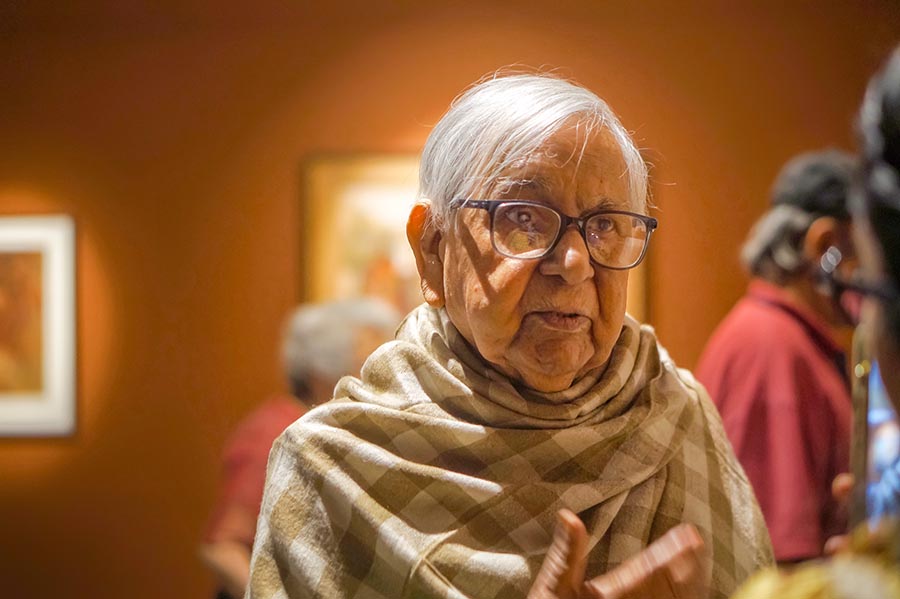
Ganesh Haloi at the opening of an exhibition celebrating his six-decade-long journey as an artist. The exhibition titled ‘Re-Citations: Rhymes About Land, Water And Sky’ is being held at the Birla Academy of Art and Culture
All photographs by Soumyajit Dey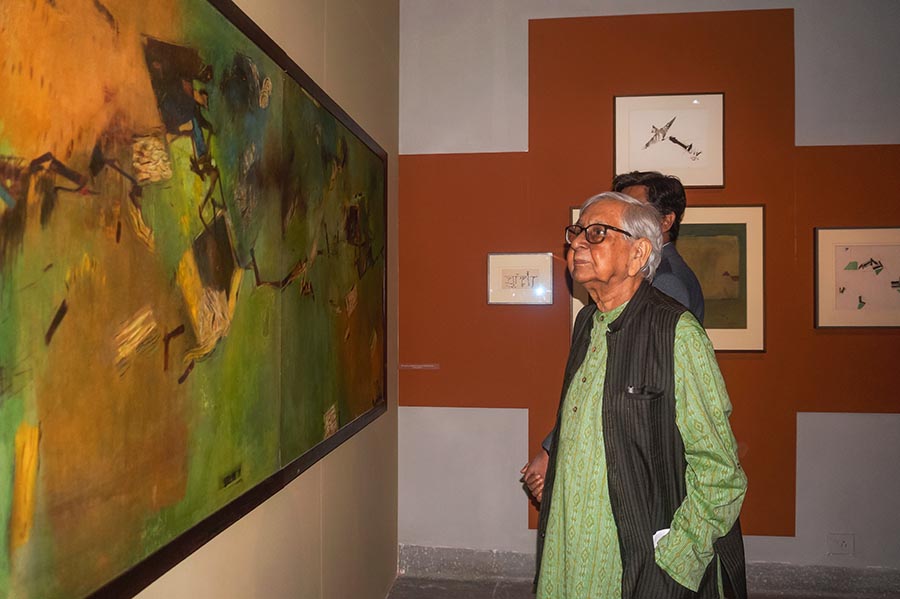
The artist, who was present at the inauguration of the exhibition held in association with Kiran Nadar Museum of Arts, spoke about his journey as a visual artist and author. ‘Without abstraction, nothing can be beautiful. Reality is suffocating, and abstraction sets one free. You cannot see abstraction, you have to feel it,’ said the alumni and former teacher of the Government College of Art and Craft, Kolkata, known for his abstract paintings

Ganesh Haloi, Reena Lath and Roobina Karode on stage. Karode, who has curated the exhibition, spoke about her experience of working with Haloi. ‘He gave me total curatorial freedom because he understands what creative freedom is. He told me about his seven years in Ajanta and pulled the works out one after the other. What always strikes me is what amazing skills he has — even in his early drawings and sketches, his skills are just extraordinary’
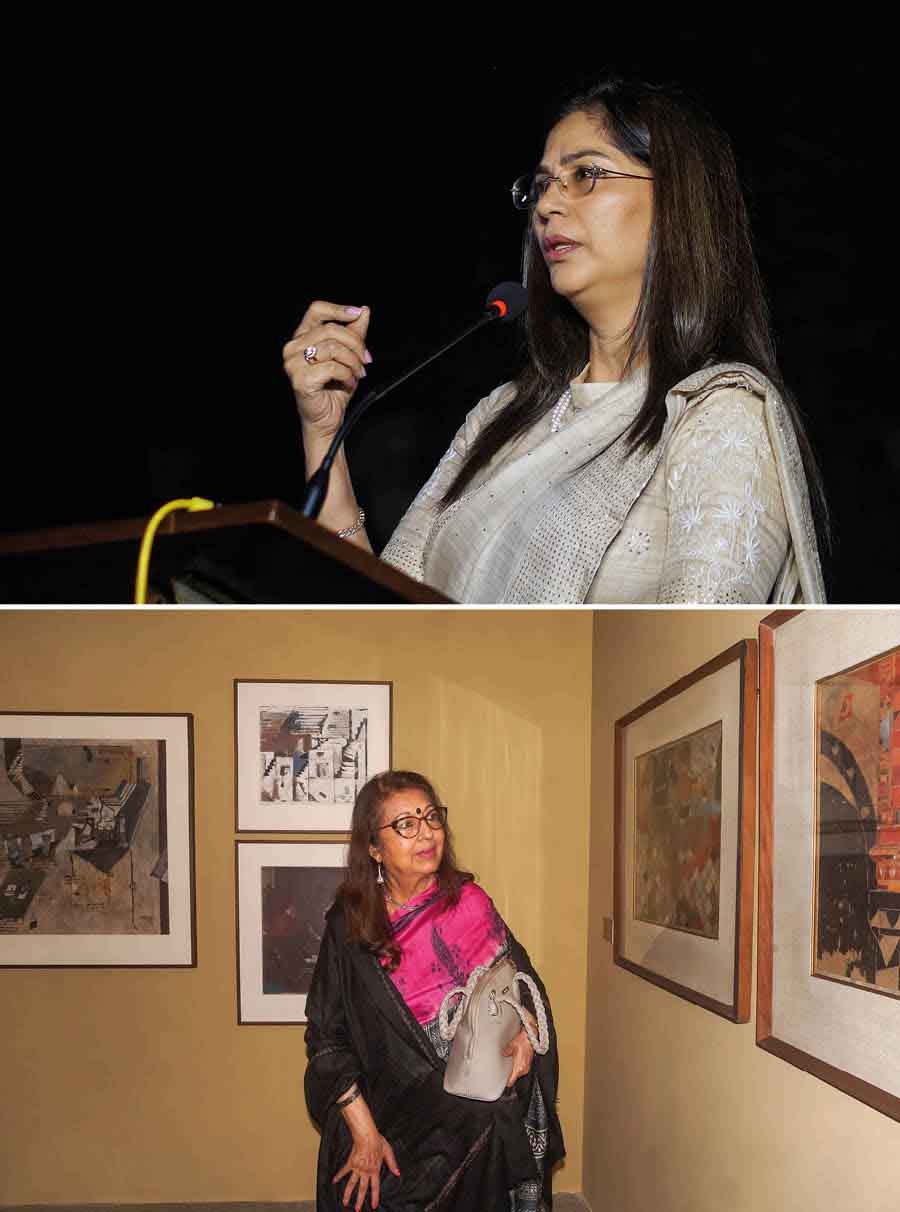
The retrospective was also attended by Reena Lath (top), the director of Akar Prakar, and (above) author Rita Bhimani. Bhimani, who has been an admirer of Haloi’s work for over 30 years, said: ‘His continuous evolution as an artist is his strength. His abstraction is what is pulling us and making us look at his work and Ganeshda himself with new eyes. His perspective is ever changing, and that is the beauty of an artist’

(Top and above) From a portrait of Ganesh Haloi captured by veteran photographer Nemai Ghosh to the screening of an audio-visual in which Haloi speaks about his idea of art — the exhibition is a window into the 88-year-old practising artist

Born in Bangladesh in 1936, Haloi migrated to Kolkata in 1950, the experience of displacement is one of the key elements that leaves an imprint. The minimalism in the depiction of man and nature in his paintings or his portrayal of landscape weaves a delicate and minute metaphor of life

Did you know Haloi was appointed by the Archaeological Survey of India to create replicas of the Ajanta murals in 1957, a year after his graduation from art college? He stayed back at Ajanta for seven years, creating a huge volume of work both in the field of art and in literature
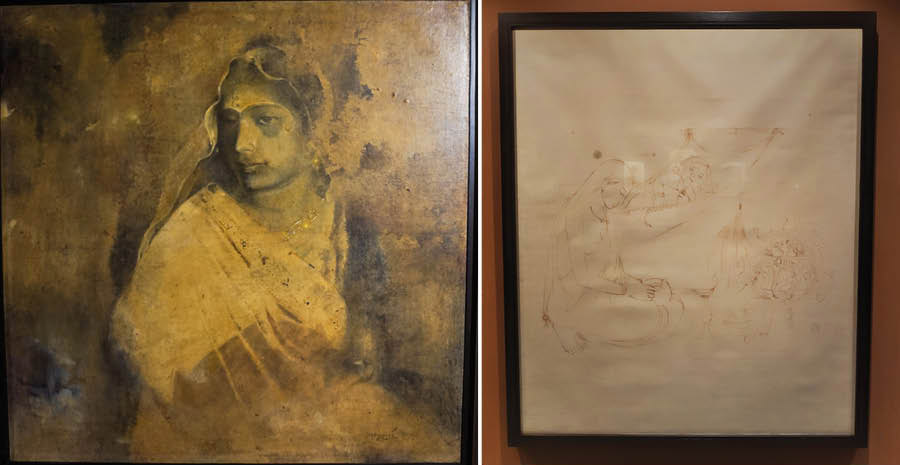
An oil canvas of his sister on her wedding day painted on Nepalese paper reminds one of his artistic fluidity. His brilliance and dexterity is also evident in his strokes in Chinese ink or the ones on gouache
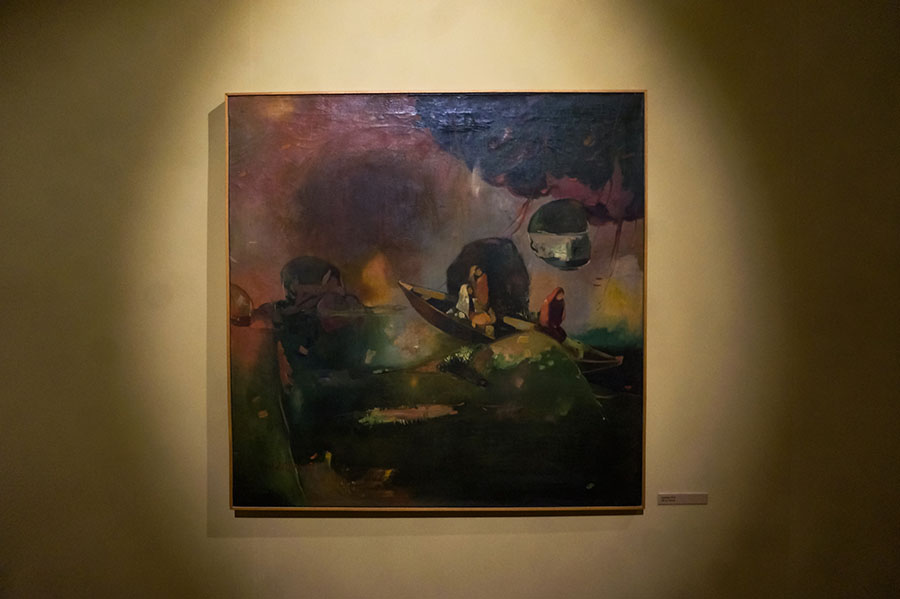
Haloi spoke about the importance of river Brahmaputra in his life, looking back to his life in Jamalpur in Bangladesh. His house was on the banks of the river and the courtyard was often flooded. Karode, who had spent hours with Haloi discussing work and selecting from an extensive volume recalled how the artist, spoke about seeking what was unseen to the eyes

A particular memory shared by Karode was Haloi finding intrigue in the fleeting bodies of birds wrapped in the nocturnal darkness during his time in Bangladesh. The curator further introspected that the seed of abstractism was growing in Haloi perhaps from his formative years

Several students of Haloi belonging to various age groups as well as art enthusiasts were seen engrossed in the immersive experience of Haloi’s work

The exhibition is on display from March 1 to April 13 on the first and fourth floors of Birla Academy of Art and Culture at Southern Avenue from 3pm to 8pm. The gallery is closed on Mondays and on public holidays. If you are a fan of author Ganesh Haloi, too, his books ‘A Rhythm Surfaces in the Mind’ and ‘The Feeling Eye’ can be collected from the exhibition venue as well as from the website of Akar Prakar